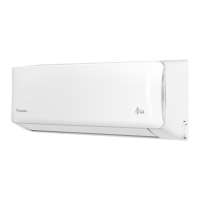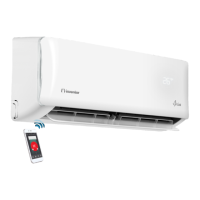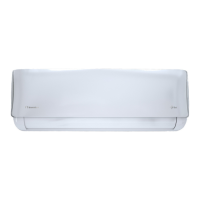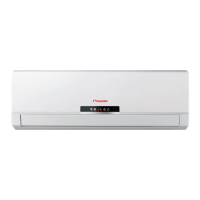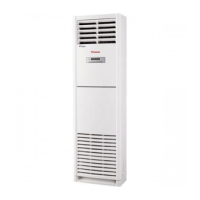Page 14
CAUTION
•
Before changing the lter or cleaning,
turn off the unit and disconnect its power
supply.
•
When removing lter, do not touch metal
parts in the unit. The sharp metal edges can
cut you.
•
Do not use water to clean the inside of the
indoor unit. This can destroy insulation and
cause electrical shock.
•
Do not expose lter to direct sunlight when
drying. This can shrink the lter.
CAUTION
•
Any maintenance and cleaning of outdoor
unit should be performed by an authorized
dealer or a licensed service provider.
•
Any unit repairs should be performed
by an authorized dealer or a licensed
service provider.
Maintenance –
Long Periods of Non-Use
If you plan not to use your air conditioner for an
extended period of time, do the following:
Clean all lters
Turn on FAN function until
unit dries out completely
Turn off the unit and
disconnect the power
Remove batteries
from remote control
Maintenance –
Pre-Season Inspection
After long periods of non-use, or before periods
of frequent use, do the following:
Check for damaged wires Clean all lters
Check for leaks Replace batteries
Make sure nothing is blocking all air inlets and outlets
SAFETY PRECAUTIONS
If ANY of the following conditions occurs, turn off your unit immediately!
• The power cord is damaged or abnormally warm
• You smell a burning odor
• The unit emits loud or abnormal sounds
• A power fuse blows or the circuit breaker frequently trips
• Water or other objects fall into or out of the unit
DO NOT ATTEMPT TO FIX THESE YOURSELF! CONTACT AN AUTHORIZED SERVICE
PROVIDER IMMEDIATELY!
Common Issues
The following problems are not a malfunction and in most situations will not require repairs.
Issue Possible Causes
Unit does not turn
on when pressing
ON/OFF button
The Unit has a 3-minute protection feature that prevents the
unit from overloading. The unit cannot be restarted within
three minutes of being turned off.
The unit may change its setting to prevent frost from forming
on the unit. Once the temperature increases, the unit will start
operating in the previously selected mode again.
The set temperature has been reached, at which point the
unit turns off the compressor. The unit will continue operating
when the temperature uctuates again.
The indoor unit
emits white mist
In humid regions, a large temperature difference between the
room’s air and the conditioned air can cause white mist.
Both the indoor
and outdoor units
emit white mist
When the unit restarts in HEAT mode after defrosting, white
mist may be emitted due to moisture generated from the
defrosting process.
Troubleshooting
The unit changes
from COOL/HEAT
mode to FAN
mode
Page 14
SAFETY PRECAUTIONS
If ANY of the following conditions occurs, turn off your unit immediately!
• The power cord is damaged or abnormally warm
• You smell a burning odor
• The unit emits loud or abnormal sounds
• A power fuse blows or the circuit breaker frequently trips
• Water or other objects fall into or out of the unit
DO NOT ATTEMPT TO FIX THESE YOURSELF! CONTACT AN AUTHORIZED SERVICE
PROVIDER IMMEDIATELY!
Common Issues
The following problems are not a malfunction and in most situations will not require repairs.
Issue Possible Causes
Unit does not turn
on when pressing
ON/OFF button
The Unit has a 3-minute protection feature that prevents the
unit from overloading. The unit cannot be restarted within
three minutes of being turned off.
The unit may change its setting to prevent frost from forming
on the unit. Once the temperature increases, the unit will start
operating in the previously selected mode again.
The set temperature has been reached, at which point the
unit turns off the compressor. The unit will continue operating
when the temperature uctuates again.
The indoor unit
emits white mist
In humid regions, a large temperature difference between the
room’s air and the conditioned air can cause white mist.
Both the indoor
and outdoor units
emit white mist
When the unit restarts in HEAT mode after defrosting, white
mist may be emitted due to moisture generated from the
defrosting process.
Troubleshooting
4
The unit changes
from COOL/HEAT
mode to FAN
mode
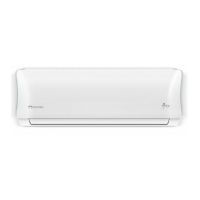
